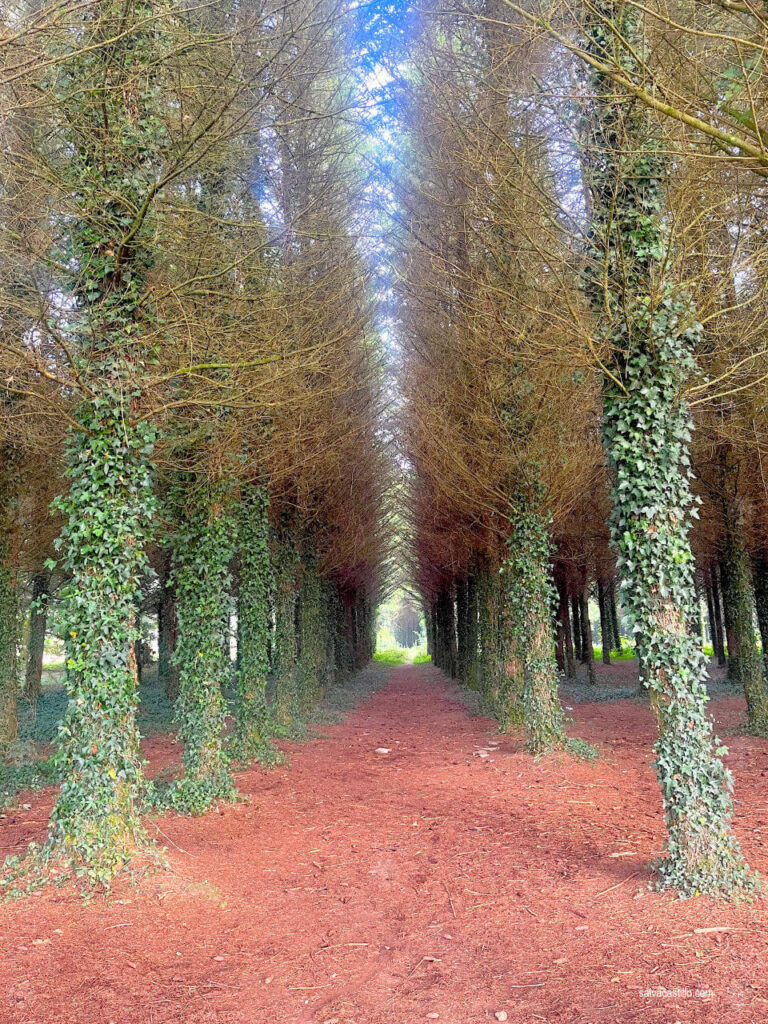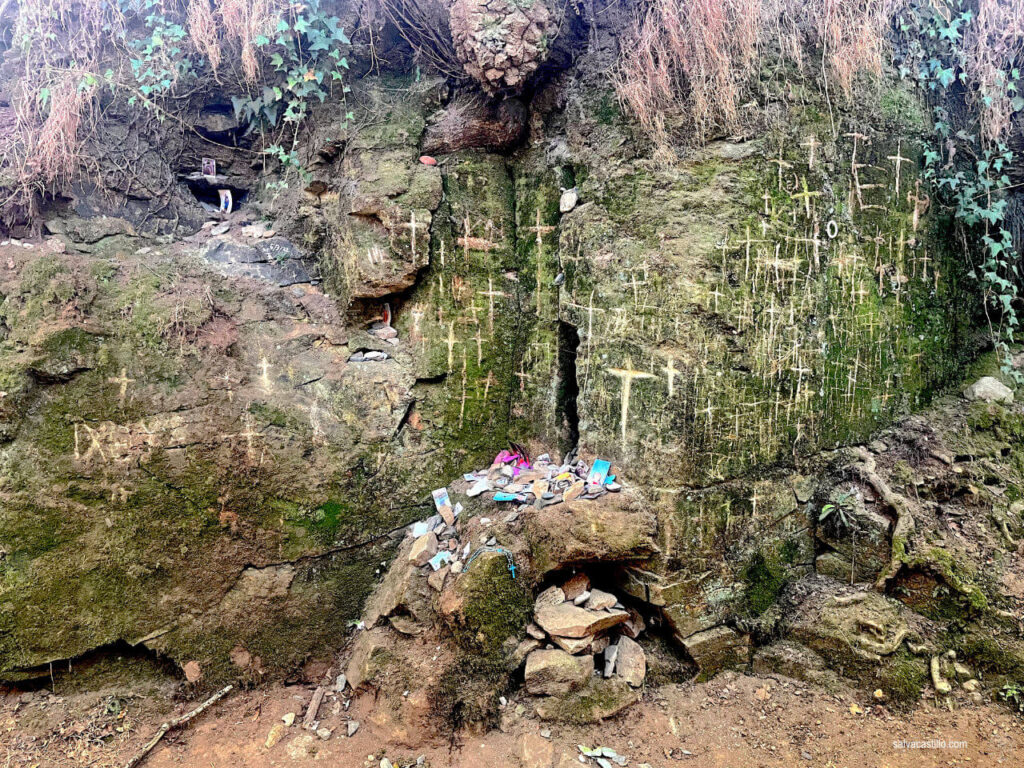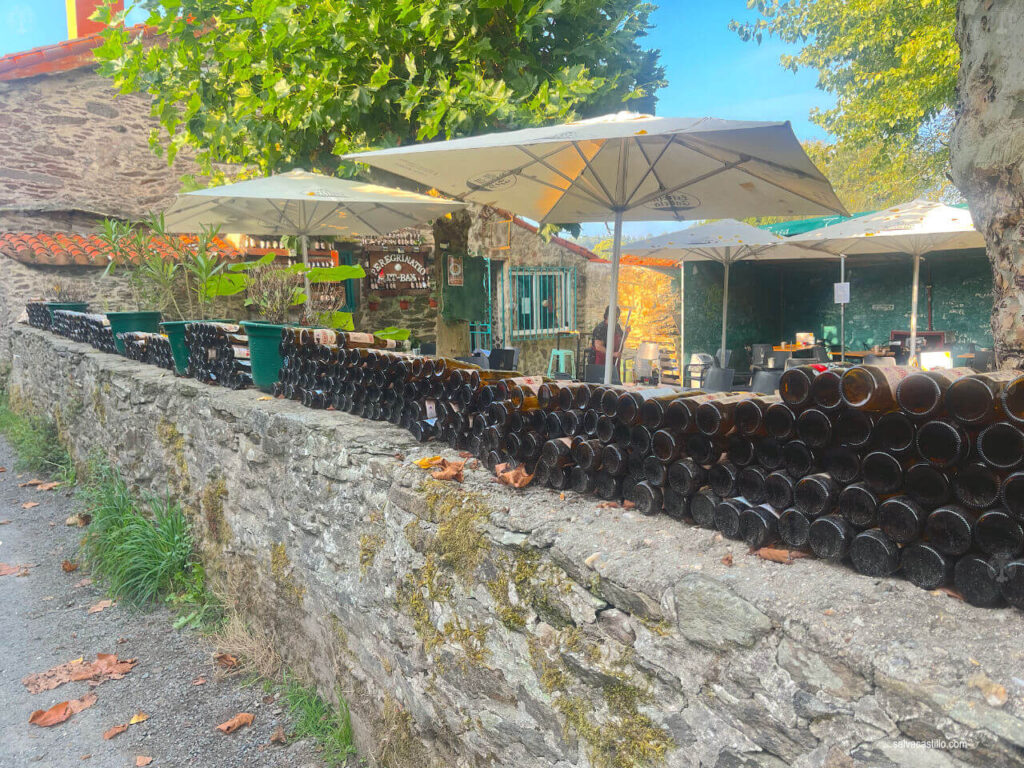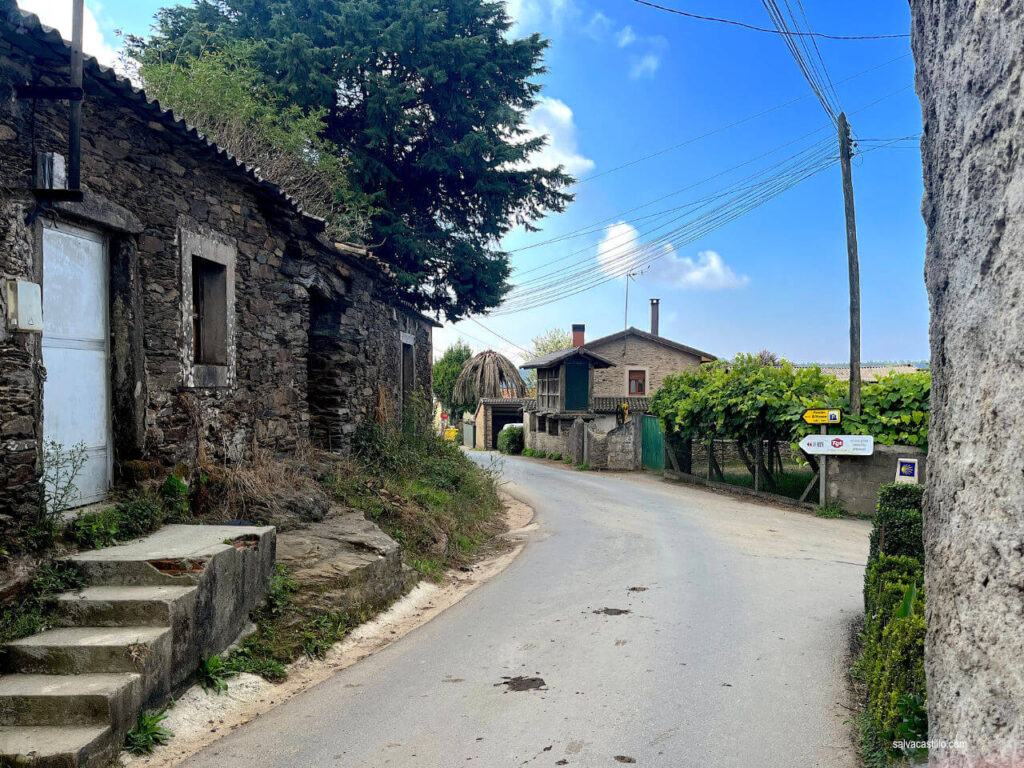After a refreshing sleep, a new stage opened before me. The journey to O Pedrouzo should not present much difficulty, compared to what I had already left behind. My friends who had made the pilgrimage the previous year told me that O Pedrouzo was a town where people were already partying more after having met along in the previous stages and that the partying was guaranteed, as it was the last night before arriving in Santiago de Compostela. So, prudent of me, I decided to book before leaving a “lodge for rich people” in a hostel in O Pedrouzo, just in case I met the marabunta of people when I arrived at that village.
“Lodge for rich people”, for those who are not familiar with the lingo caminero, means “private room”. If it has its own bathroom then it is like the Taj Mahal of the Camino. Being away from loud snoring people who wake up at 5 a.m. is an absolute triumph. From time to time you have to treat yourself with a “Lodge for rich people” where you can recuperate.
I woke up early, even at night, probably helped by the noises to which my bunkmate, a young Japanese/Korean guy -I can’t tell them apart physiognomically- that dressed like a rapper from the 90’s, contributed. And since I was awake, I decided to take advantage and leave early. It was still dark.

Arzúa is not very big but it is picturesque. I suppose that, being a countryman, seeing thousands and thousands of people from the most remote places in the world passing by every year anesthetizes you to be amazed by the human condition. After a while you have seen it all.
The “Praza do Galiza” was decorated like this. Other adjoining streets as well. It looks cool, but if you want to make a fair, the traditional lanterns of “Alvear/Fino la Ina” of the southern regions of Spain are not so bad either.

Leaving Arzúa, the Camino turns into a big downhill slope that then – oh my friend – will have to be climbed again. The tilled fields on either side of the route offer views wrapped in the morning mist.

The route for cycling pilgrims is not exactly the same as the route for walking pilgrims, but many sections are shared. The walkers do not like to share the route with the cyclists because the latter often go at full speed even in narrow stretches, and among the pedestrians there are elderly people who are shocked when they are overtaken at high speed by the cyclists. So when there is a downhill slope, walkers whistle to warn that a cyclist is coming and, not infrequently, ask the cyclists to slow down and be careful. When going up steep slopes, cyclists no longer seem so fierce.

The route is dotted with beech and elm trees, where the vines have taken over, in a symbiotic balance, the trunks of these majestic trees. The forests are submerged in gloom because of the dense groves.

The mist is still present on the Camino well into the morning. It reminds me of that fabulous track, “The mist covered mountains”, by Mark Knopfler for the soundtrack of that cult movie “Local Hero”. As it is music with Gaelic roots, and really the mist covered mountains, I think it fits perfectly here. Music evocative of places whose lush greenery does not exempt a sense of solitude and seclusion.

Along the road there are various more or less formal altars where people have added their footprints over time. They can be nooks and crannies in a rock, or a wider than normal support on a pile on the road. Anything helps to put a rock, or write a signature, or leave a religious stamp.

The Camino also has a quite remarkable recreational part. This bar Tía Dolores makes it visible that there are other types of activities with which pilgrims compensate for the sacrifices of the Camino.

The Camino is usually well signposted. Just follow the yellow arrows that are frequently found along the route and mainly at each crossroads. If you go for a certain amount of time without seeing arrows, there is a big possibility you got lost.
The Compostela is a piece of thick paper folded in several parts with which pilgrims certify that they have completed the Camino, and whose purpose is that at the end of the Camino they issue the pilgrim’s certificate once they have checked that you have traveled a minimum of kilometers. To certify their journey, pilgrims print stamps of the places they pass through on the Compostela. Practically all the establishments along the way have their own stamps, not to mention religious places of worship such as churches, hermitages and monasteries. The pilgrim collects them as proof that he was there on the date he receives the stamp. It is requested to accredit two stamps per day, although for those of us who started the Camino at such a short distance from Santiago (~115 km) there is plenty of free space to fill, so we stop as we feel like it to get the stamp of this church or this restaurant. There are also people who take their camping table to the Camino and have their own stamp and ask for the will to stamp the Compostela.

The Guardia Civil also has itinerant vans that they place along the Camino where they stamp the Compostelas. It is very nice and I think it is a very good idea to give a sense of security to the pilgrim. On one occasion, after stamping in a Guardia Civil van, I continued on my way along a path that I thought was the right one -I didn’t think much about it, there was a street right next to it and I moved onwards-. Three girls ran after me to warn me that I was going in the wrong direction. Many thanks to them because if they didn’t warn me I might show up in Kentucky. I ran into them later at a restaurant in Santiago de Compostela and was able to thank them again for their deference to me. People who don’t know you at all and nevertheless help you at a time when you do not realize you need help 💕

Shortly before arriving at O Pedrouzo a bagpiper gave me a bucolic picture of the Camino de Santiago: the whining of the bagpipe as I advanced through the Galician forests in pursuit of reaching Santiago.
In O Pedrouzo there was not so much of a party that day. The town had been taken over by an excursion of one – or several – high schools and they had rented a couple of establishments to be able to serve all the students. Anyway, I was able to dine quietly and speak with a couple of diners at the table next to me who were also pilgrims. The day closed with some drizzle – Borrasca Aitor was already hovering over us – but so far the weather had been kind to me: mostly sunny days with good temperatures. A favorable scenario for walking 20+ km each day.